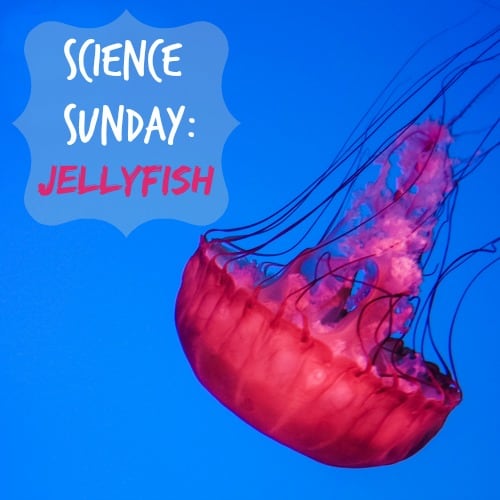
Lately, after two visits to aquariums where jellies were prominent, and observing a jelly on the beach in Hilton Head, I’ve been fascinated with these ocean creatures! Today, I’ll share some fun facts about jellies that you may not have known.
Jellyfish are not actually fish. They are invertebrates. “Jellies” or “sea jellies” is a better way to describe these ocean creatures.
Jellies can very in size from as small as a pinhead to larger than a human.
Jellies can eat plankton, crabs, or other jellyfish depending on how large they are.
Have you ever wondered how exactly a jelly stings? Here’s a secret: they’re not trying to be mean. It happens as a passive act on the cellular level. (This is also why a dead jelly or stray tentacle is STILL able to sting you; so watch out!) I’ll explain more below the diagram.

Sea jelly tentacles are lined with thousands of tiny cells. Inside these cells are pressurized coiled threads called nematocysts. (Think of them kind of like a spring.) When something brushes against a jellyfish tentacle, these pressurized coils spring out, wrap around their victim, and fire venom. The venom is mean to paralyze the prey of a sea jelly so they can effectively eat it.
So if you experience a jellyfish sting, it was only because the jelly’s tentacle just happened to brush up against your skin.
Did you know that sea turtles love to eat jellies?! Despite the fact that they are venomous, sea turtles are able to eat these creatures without being harmed.

I couldn’t find any solid information on the real science behind this. One source vaguely mentioned sea turtles “neutralizing” the venom in their stomachs. Yet this doesn’t quite make sense if the nematocyst is activated by pressure and would therefore release venom in the mouth and all the way down the digestive tract. Perhaps there are special neutralizing cells all along the inside of a sea turtle’s mouth, esophagus, and stomach? For now, it’s still a mystery!
That’s all for Science Sunday. I hope you learned something new and are even more fascinated by these incredible ocean creatures.
Never Stop Exploring

